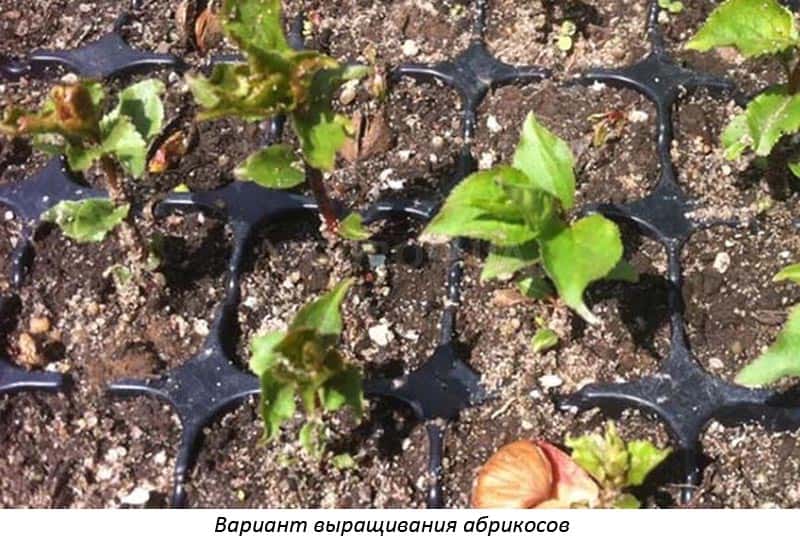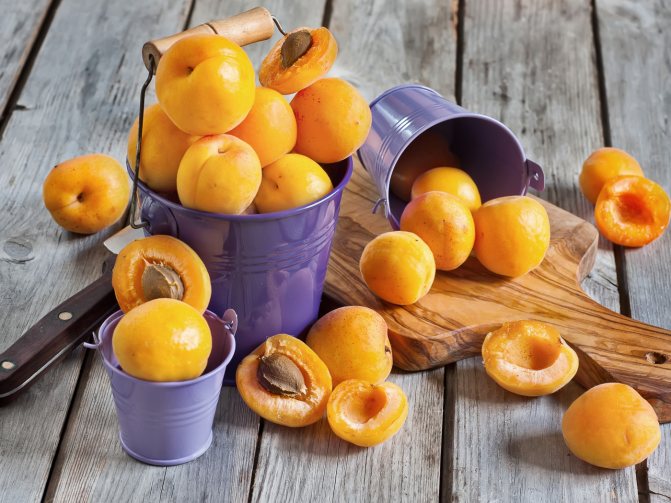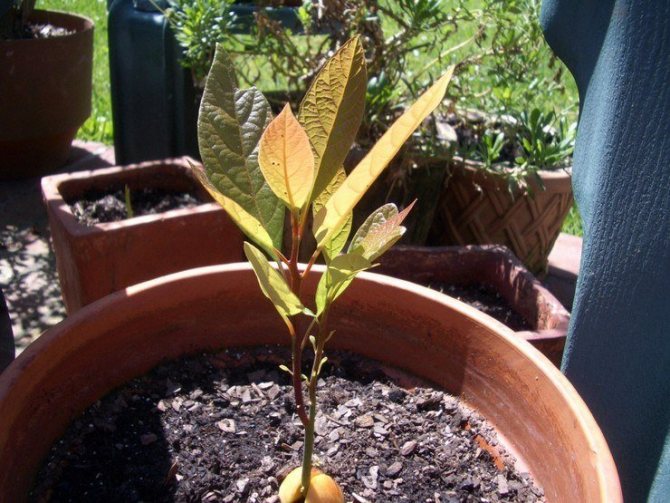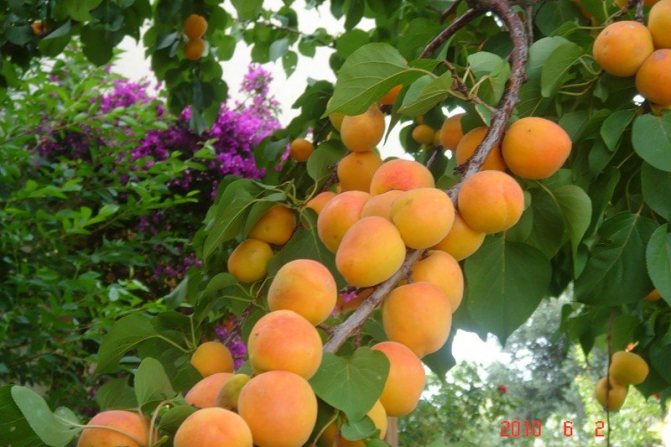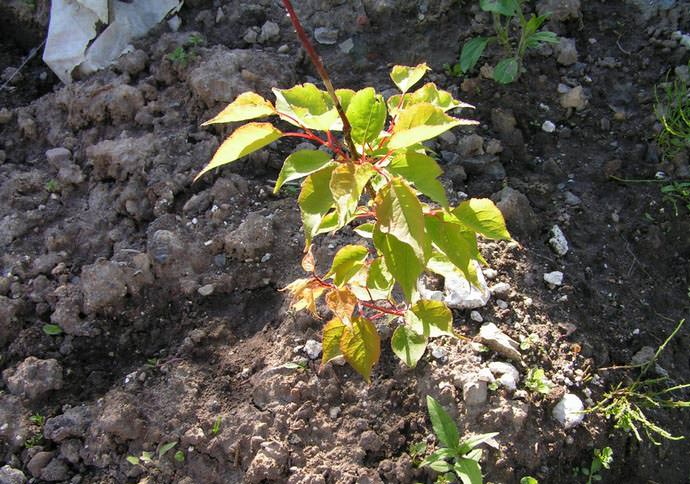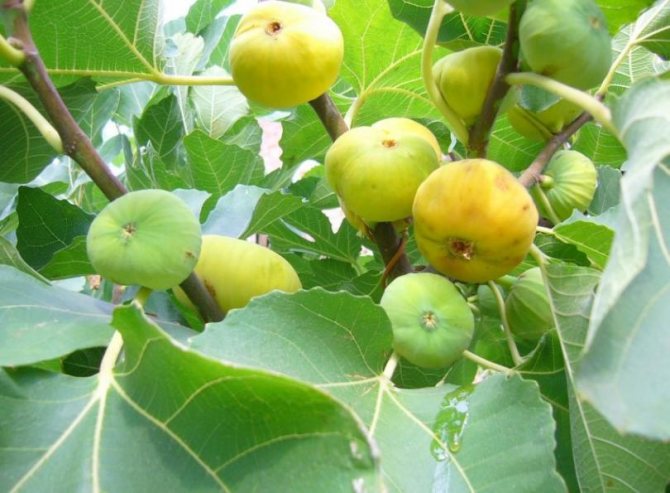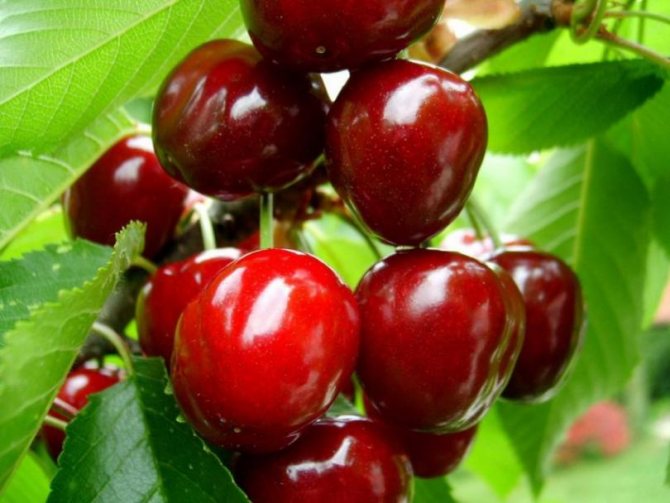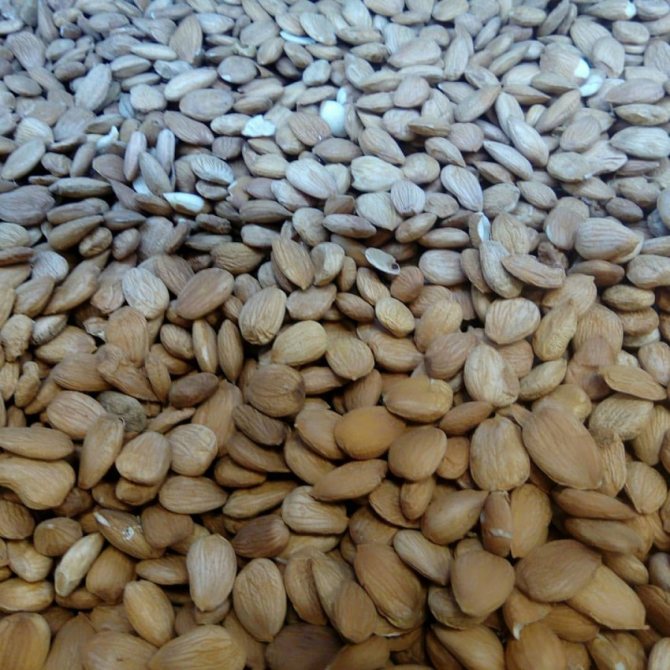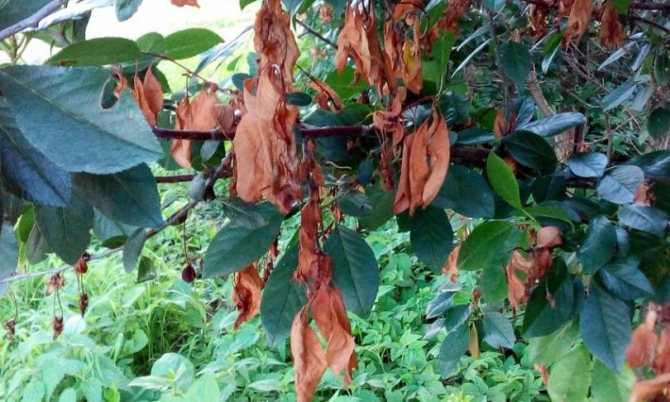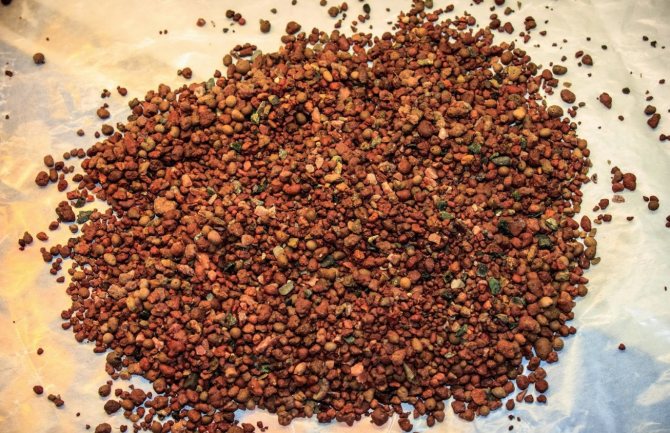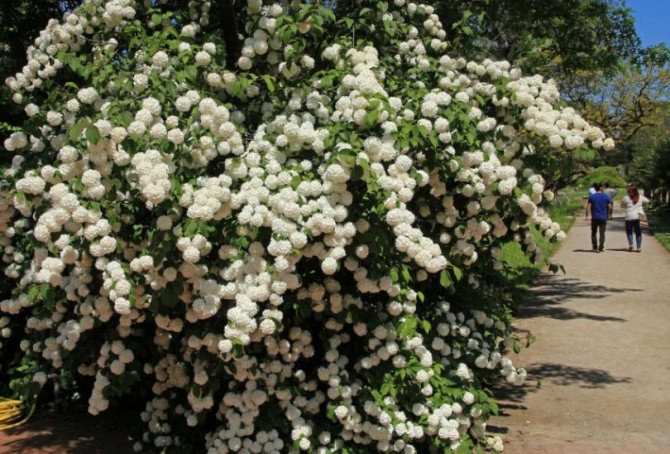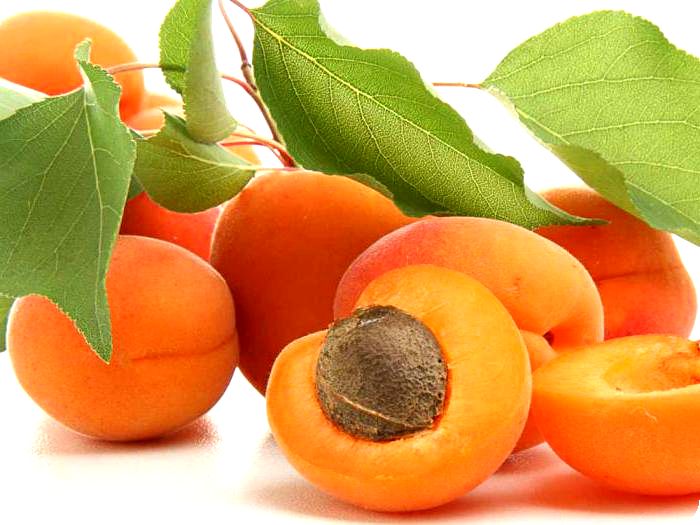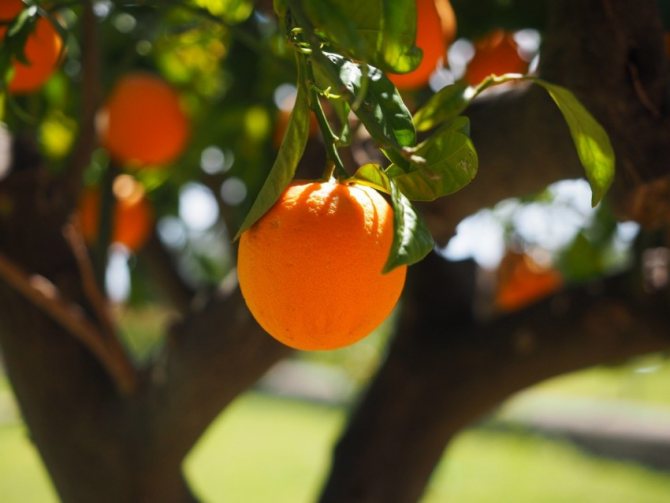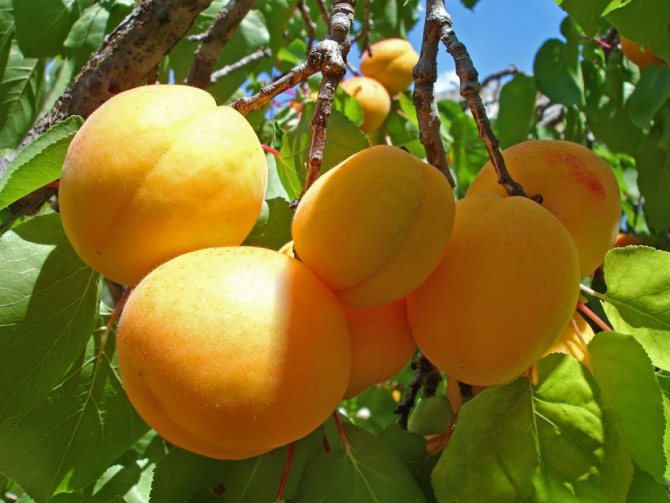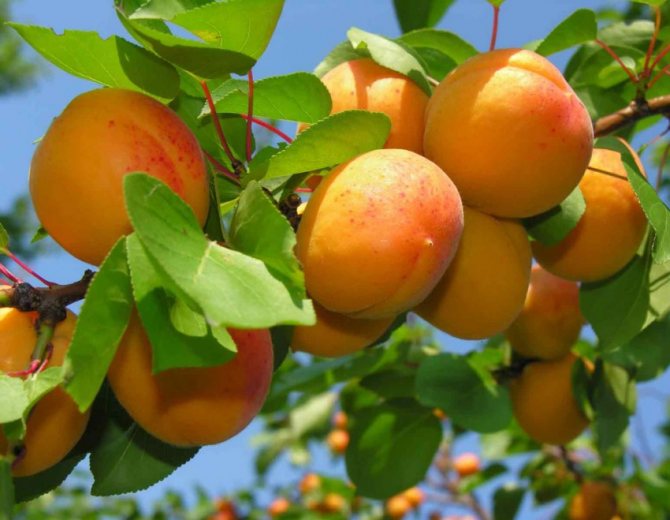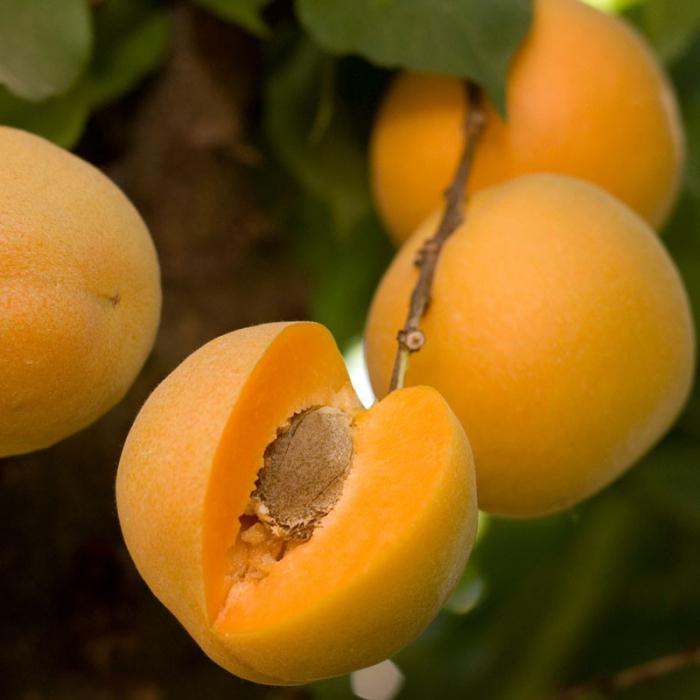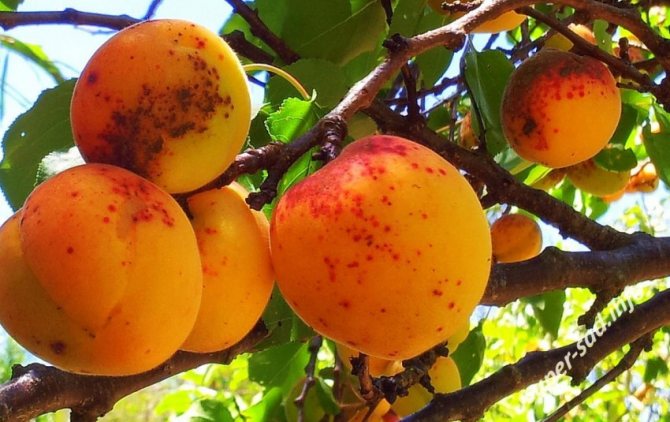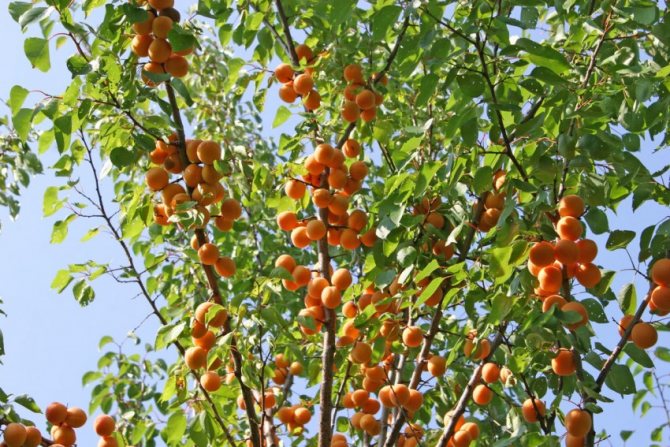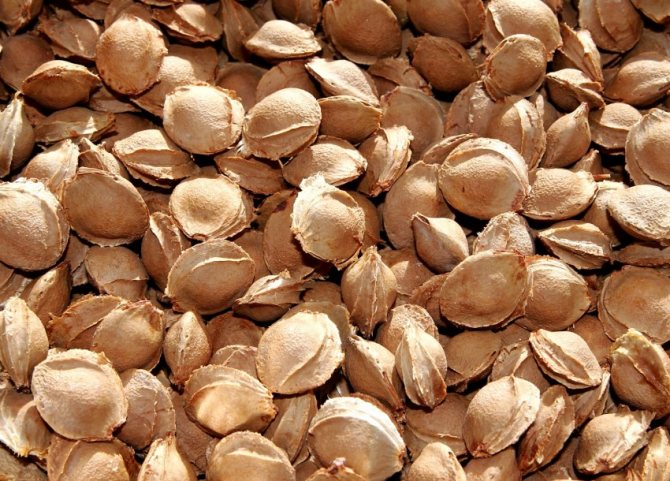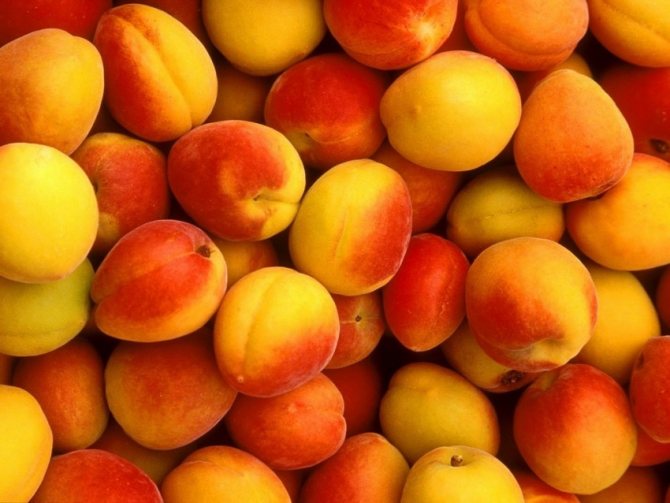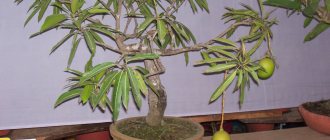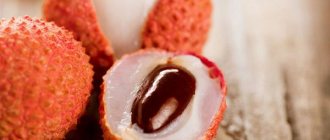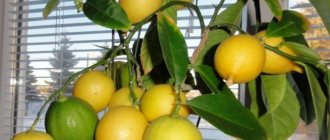In this article, you will learn how to grow an apricot tree from a seed, as well as how to form a crown and prepare the seeds for winter.
If you have your own land, then you know the feeling when you want to grow everything yourself - from seeds. Almost all gardeners make their own seedlings, preparing them in early spring. Trees can also be grown from seed. For example, an apricot. If you bought this fruit from the market and you like the variety, plant the same tree in your garden. Read below how to do this.
When is it better to plant apricot pits: immediately or in the fall?
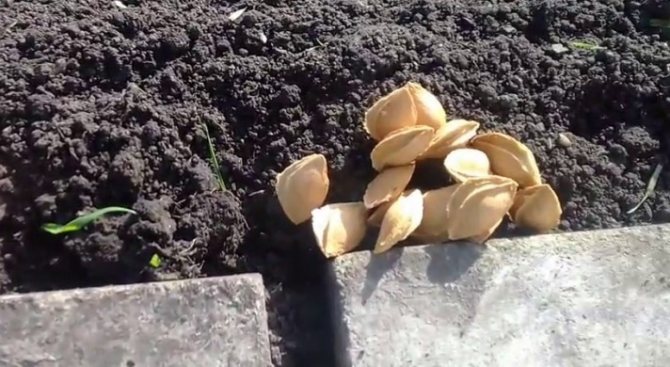
Apricot pits for planting
So, the time has begun for apricots, and you want to plant and grow a tree from a seed. When is it better to plant apricot pits - immediately or in the fall? There are several planting options, and you will learn about them in the following article.
Apricot pits can be planted in the fall:
- Before planting, place a few seeds in water for a day to remove those that float (which means they are empty).
- Plant the remaining seeds in rows at a distance. 10 cm from each other and in depth on the 6 cm.
- For an apricot to grow, it needs to find a quiet, sunny southern location, protected from the north wind.
- For the best result, it is worth digging the rows deeper and laying the bottom with grass, sand, earth and humus.
- During the winter, the seed will grow stronger and undergo natural selection for endurance, and in the spring the first green sprouts will appear.
If you want to plant seeds in the spring, then you can do the following:
- Seeds need to be stratified - this is a long exposure of seeds at a certain temperature - +5 or +6 degrees for two weeks. Then they are planted in the ground. Read more about stratification methods below.
- You can also put the seeds in a box with holes or a box, sprinkle the bottom with sand and put in a cool place for the winter. In the spring, when the weather is warm, plant the seeds in the ground. Leave the one that sprouts first. But those that appear later are also suitable for disembarkation.
- Another way is to place the seeds in the water in mid-March, but remember to change it daily. After soaking, place them in wet sand and lower them into the basement, and in April, transplant them into the ground when the weather is favorable.
Apricot trees, which were grown from stone, lack the main trunk, therefore, great attention should be paid to the formation of the crown of the seedlings.
How to store apricot pits before planting?
Apricot pits for planting
Above was described one way how to store apricot pits before planting, for example, in a box or box of sand. Here's another way:
- Before resting, the bones must be thoroughly rinsed and dried in the shade, without additional assistance.
- So that the seeds are preserved before planting and most of them are suitable, they are stored in the cold, but not frozen, without exposure to the sun, moisture and an abundance of oxygen. A refrigerator is suitable for this.
- The basement is also suitable if the temperature in winter does not drop to minus, and is kept within 2-6 degrees.
- The prepared bones are placed in a box of dry sand. It is advisable to take the sand disinfected.
Some time before planting, future shoots must be hardened.It is also called stratification, and how to store apricot pits before planting in the last three months depends on it. There are two ways:
- In the first method, the bones are soaked in water for three days before planting, changing it daily. Those who surfaced and did not drown on the third day can be thrown away. After that, the bones are returned to the cold and sand, but this time it should be wet.
- In the second method, there is no rejection and soaking. Three months before planting, they are immediately placed in wet sand. Seedlings will appear by the end of the term, you need to slow down growth if this happens already in the first or second month. For this, the storage temperature is lowered by two degrees.
In both cases, drying out and rotting of the soil should not be allowed. In April, the planting material is ready.
Choosing planting material
The main condition for growing a strong fruit-bearing tree is the correct choice of planting material. Experts advise taking apricot pits from zoned winter-hardy trees. Zoned - this means that the parent tree should grow and bear fruit well in your area. Most likely, the fruits of the "local" tree will be smaller in size than the fruits grown in the south, but they will not be inferior to them in taste.
Note: in central Russia, the varieties Triumph Severny, Alyosha, Iceberg, Countess, Aquarius are considered zoned. The Monastyrsky variety is considered a favorite of gardeners. The trees of this variety give high yields, the fruits ripen in August.
Where can I get a bone?
The seed must be removed from a ripe, soft fruit. The ripening period for apricots is from July to August. At this time, you need to pick the fruits.
If apricot trees do not grow on your site, you can buy apricots from summer residents during this period. If you decide to buy apricots in a supermarket or market, you should not choose the largest and most beautiful fruits. Most likely, these are imported apricots, and their seeds with a high degree of probability will not sprout. It is best to ask the neighbors in the summer cottage to treat you with several ripe fruits.


Choosing quality seeds
If you buy apricots from summer residents, you can clarify the variety and taste of the fruit when buying. If the gardener is well acquainted with the characteristics of the variety, he can tell whether he is self-fertile or not, in what period fruiting occurs - early or later. It is better to choose the fruits of self-fertile trees. The early varieties are frost-resistant, and the later ones are unpretentious to weather conditions and can tolerate a lack of sunlight.
An important condition is that the bone should be well separated from the pulp, this indicates that it is ready for planting. It is better to take not one, but several bones at once. This will increase the chances of success.
How to store the bone until planting?
The seeds extracted from the fruits are washed under running water, removing the remnants of the pulp from them. Many summer residents also recommend washing the bones with hydrogen peroxide. Then they are dried and poured into a glass jar. Further until the moment of planting, it is recommended to store the seeds in the refrigerator.


How to germinate an apricot seed in a pot at home?
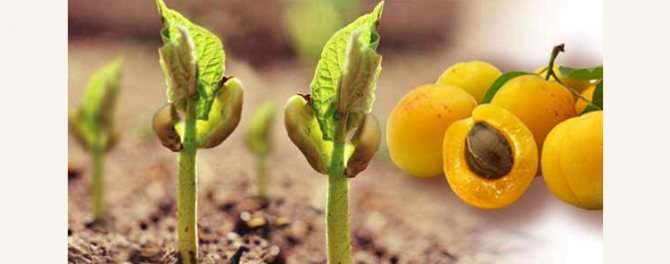

Apricot pits for planting
Germinating a seed at home is not much different from planting it in the soil, you can plant an apricot seed in a pot in the fall, and a small seedling will sprout by the spring. Here are some tips for sprouting an apricot seed in a pot at home:
- The bone must first be soaked in water.
- To plant the apricot bone, you need to take a deep container, a high pot, because the apricot has a pivotal root system.
- A regular half-liter plastic cup, with cut holes at the bottom, for drainage works well.
- You can take any fertile soil.
- Pour a drainage layer (expanded clay) on the bottom of a glass or pot, make the layer not very large.
- Only the root of the future plant should be in the ground, do not bury the apricot kernel itself, because this provokes decay of the root neck.
- You need to wet the bone and soil a little.
- Cover everything with cling film and set aside in a warm, preferably dark place.
- Periodically, until you notice the sprout, inspect the glass. Open the film to remove condensation and ventilate.
When the sprouts break through, remove the glass immediately to a warm but bright place - on a windowsill or under a lamp, if there is no window on the sunny side.
It's important to know: Recommended temperature for germination of apricot pits not higher than 26but not below 23 degrees Celsius.
Watering should be done as needed, without flooding, because the apricot does not like waterlogging.
When and how to transplant seed-grown apricots into the ground?
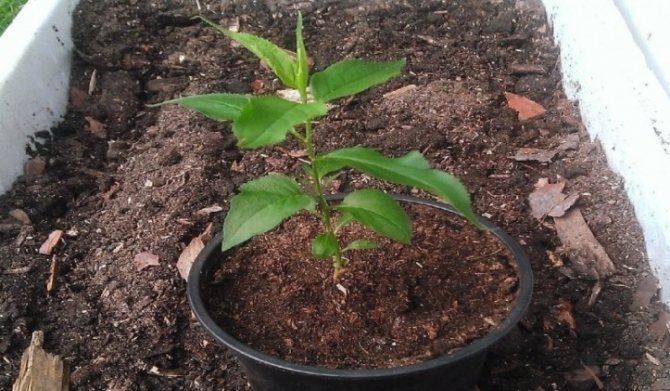

Pitted apricot
It is better to germinate apricot pits outdoors in order to increase the endurance of future trees. A plant grown in an indoor pot will die when faced with the first frost. When and how to transplant seed-grown apricots into the ground?
- The best time to plant is mid-autumn.
- The selected material is deepened into the ground and covered with humus and leaves.
In the harsh winter conditions, the bones will harden, and in the spring they will hatch tender sprouts. To prevent green shoots from exterminating birds and rodents, they should be protected:
- The simplest solution is to cover each seedling with a plastic bottle without a bottom.
- This simple device will help the apricot shoot to grow and recharge.
During the summer months, with regular grooming, the trees have time to stretch out. In September, the time comes when they need to be relocated to a permanent place. It is better that it is well lit, then the apricots will give a rich harvest.
How to care for a seedling obtained from a seed:
- At the bottom of the pit intended for planting, lay ash and tops. Cover this organic mixture with soil and then place the roots of the seedling.
- Prune overgrown shoots in early spring.
- Trees need abundant watering. The area around the trunk should be covered with sawdust to avoid drying out.
- An apricot grown from a stone is devoid of the main trunk, therefore, attention should be paid to the formation of a crown in young animals. Read more below.
An ordinary bone can give life to an apricot tree, which will be distinguished by its firmness and unpretentiousness. Such trees bear fruit perfectly and delight with the excellent taste of the harvest.
What varieties to choose for breeding?
Check out these articles as well
- The best white grapes
- Gloriosa plant
- Why do orchid leaves turn yellow?
- The best varieties of eggplant for open ground
In principle, all varieties of apricots are suitable for growing from a stone, but there are several points that should be taken into account in order to simplify the procedure.


Winter-hardy apricot varieties for northern regions
- The variety must be locally sourced. Overseas varieties can take root for a long time in an unusual climate for them. Most likely won't even survive the winter.
- In the northern regions, preference should be given to winter-hardy varieties that can withstand frosts down to -30 degrees: "Triumph Severny", "Alyosha", "Zeus", "Siberian", "Khabarovsk", "Manchzhursky", "Petr Komarov", "Uralets" and dr.
- Also, the variety should be simple, not elite coloration, otherwise the plant is unlikely to bear fruit.
How to form a crown of an apricot from a stone?
From the first year in March, it is necessary to remove frozen branches and unnecessarily long and developed shoots. It is recommended to process the places of cuts with garden varnish or drying oil. Around the fifth year, the tree will begin to bear fruit, the load on the branches will increase. To prevent their fractures, props are placed under each branch.
Advice: If the tree has a very large number of fruits, then the next year the harvest will be less. Remove some of the fruit by hand. Correct foliage to fruit ratio 1:20.
How to properly form the crown of an apricot from a stone? There are two types of crown formation:
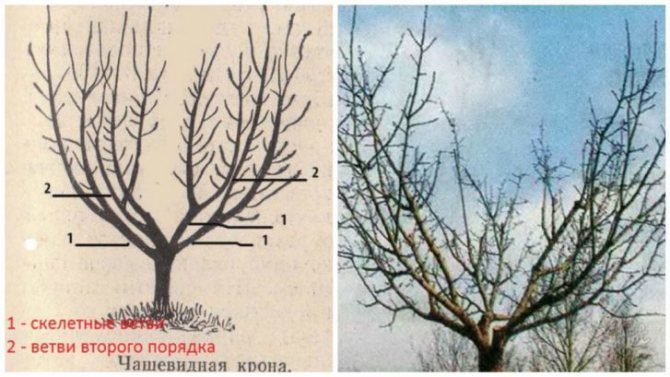

Formation of the crown of an apricot from the stone
- Cup-shaped... The branches of the skeleton of the tree and the branches of the second order are left, as shown in the picture above.
- Tierless... Such a crown turns out to be spreading. How to trim trees to form a tiered crown, see the figure below.
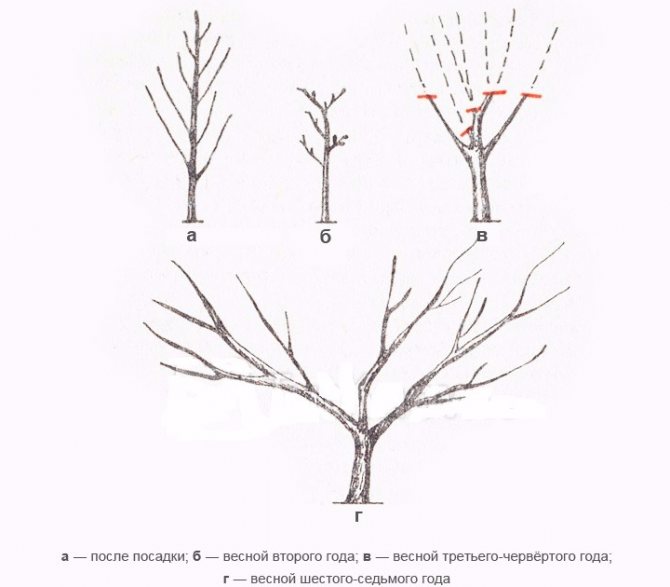

Formation of the crown of an apricot from the stone
Choose one of these types according to the type of crown you want to form. The apricot tree is very powerful and branched. You don't have to worry about overdoing it when forming the crown of the plant.
Important to remember: Fruits appear on shoots long up to 25 cmlocated on the side branches. This means that for an annual large harvest, it is necessary to carry out a strong increase in the branches of the crown, and cut the growth branches as much as possible.
Apricot trees grown from stone do not have a central trunk, it is especially important to pay attention to the formation of the crown in young seedlings. In spring and autumn, from the first year, whitewash the trunk and main branches using lime with copper sulfate. Carefully process the cracks in the wood with a garden pitch or Kuzbasslak.
Further care
You need to take care of the grown sprouts regularly. This is a very delicate and fragile culture, and if you do not follow the rules of agricultural technology, the seedlings will quickly die.
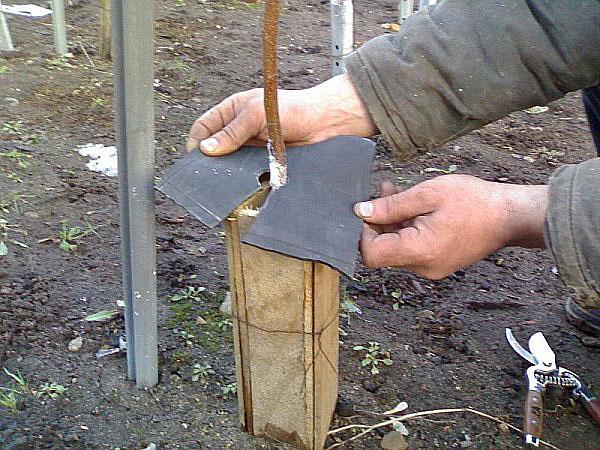

We organize watering
In the spring, the soil is irrigated depending on the weather. If it rains, you don't need to water the soil. If it's sunny - as the soil dries up. In the summer, you will have to irrigate the soil often. Make sure the water is warm before watering the apricot.
Watering with cold water can lead to disease. In summer, seedlings grow actively and they need a lot of water to ripen. It is advisable to irrigate the soil every day if the weather is hot.
Mature plants can be watered less frequently, but moisture should be abundant. Irrigate the soil 2-3 times a week.
Fertilization
In early spring, apricots are fed with nitrogen-containing fertilizers. Nitrogen has a positive effect on the growth of seedlings. Together with it, potassium is introduced into the soil. Potash fertilizing helps to increase the frost resistance and resistance of the tree to various diseases.
During flowering, the trees are fed with phosphorus. Such dressings are especially relevant during the flowering period and the formation of ovaries.


Along with mineral dressings, organic fertilizers are also introduced into the soil. It can be manure, bird droppings, urea, wood ash. After harvesting, the soil is dug up and mixed with rotted manure.
Do I need to plant an apricot for fruiting
The apricot must be grafted. And it's not so much about fruiting as about increasing frost resistance. They begin to plant trees in the spring. There are many ways of the procedure.
It is recommended to plant trees on stone fruit crops. For example, apricot, cherry plum, plum. It is best to use native plants that tolerate the local climate for grafting. When living in the south, peaches are suitable for grafting.
Barrel circle care
In the spring, when the snow begins to melt, you need to make sure that water does not accumulate near the trunk circle. Due to excessive moisture, the root system begins to rot. Regularly, the soil around the trunk is weeded and weeds are removed.
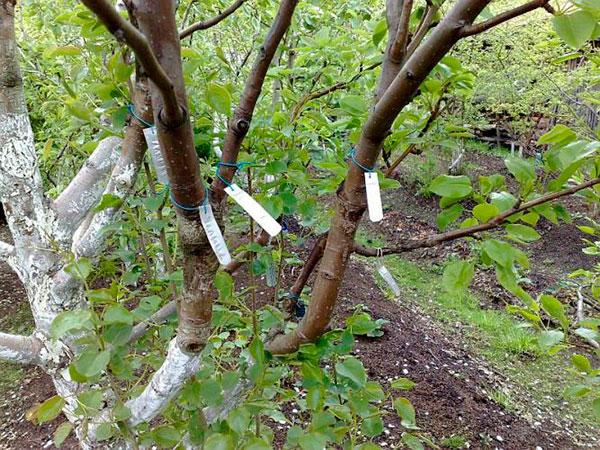

Some gardeners believe that it is undesirable to plant grass or flowers in the tree trunk for normal tree growth. The weeds are constantly pulled out so that the ground is always visible. This apricot cultivation technique is called black fallow.
Preventive treatments
Preventive wood treatment is required. The procedure will prevent diseases. For processing, special agrochemicals are used. The advantage of these drugs is that they are not toxic and are not absorbed into the pulp of fruits and plant tissues. For example, you can use Bordeaux liquid, copper sulfate.
Spraying is recommended on a cloudy, windless day. Before the procedure, you must wear glasses, gloves and a mask. The procedure is carried out in early spring. This will prevent diseases immediately when the growing season has just begun.


The drug "Horus" helps against bacterial and fungal diseases. The drug is used before the apricot begins to bloom.
Urea helps prevent the development of diseases. Wood is treated with urea in spring or autumn. In 10 liters, 500 g of urea is diluted. When using urea, it must be remembered that if the solution turns out to be too concentrated, it will burn the foliage, therefore, it is better to process it either before the leaves appear or after they fall off.
But not only diseases have to be fought when growing trees. Apricots also infest insects. For the destruction of pests, the preparations "Altar" or "Confidor Maxi" are effective.
From folk remedies, diesel fuel will help get rid of insects. The procedure is carried out in the fall, after the foliage has fallen. Diesel fuel is bred in water and trees are treated.
If you plant an apricot seed: will the tree bear fruit?
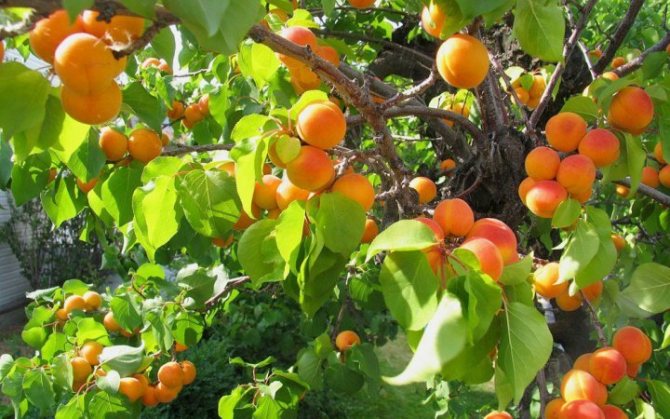

Fruit-bearing apricot tree, planted from seed
In order to grow an apricot tree from a stone, you need very little. In summer, take seeds from tasty and large varieties of apricot that bear fruit in a given area, wash them, dry them and plant them in the fall at the end of October, early November, after soaking them in water for about for 20 minutes... So after all, if you plant an apricot seed, will the tree bear fruit? Here are some tips to help your tree grow beautifully:
- Bones should be planted shallow - from 1 to 5 cm.
- It is necessary to take a few seeds, in case not all will sprout, or the seedlings will not overwinter in the second and subsequent winters.
- There is also a danger that the seeds will be dragged away by rooks in the spring.
- Young seedlings do not need to be out of sight, because they are very small. They can be broken by the wind or damaged by someone working the land. Fence off the trees so that you can see that a young seedling is growing in this place.
- It is best to plant the seed immediately in the place where the apricot tree is planned to grow, so that when transplanting to a new place, it does not injure it again.
Experienced gardeners believe that a tree grown from a stone on its own becomes more unpretentious, less likely to get sick and bears fruit longer. He develops immunity in this climatic zone.
It often happens that from an excellent tree variety, fruits grow that do not retain the qualities of this variety. But a tree with larger and sweeter fruits can also grow if the seeds are not taken from the wild. From a wild apricot, a tree will grow, most likely with small fruits. Therefore, harvest apricot seeds from good varieties, harvest and plant seedlings for yourself or for sale. Good luck!
Gardeners reviews
Based on their own experience, gardeners recommend planting seeds of local varieties of apricots or varieties adapted to growing in Siberia, in the Urals - they will have a better chance of taking root. In addition, when planting seedlings, you can use a proven method and plant branches. Transplanting seedlings is necessary at stable temperatures, when there is no threat of frost.
Despite the seeming difficulty of growing such a demanding plant as a pitted apricot, it is quite an exciting activity that can give a good tree, excellent fruits and a wonderful mood from the realization that what work was done for good reason.


